How do the Rational method and the SCS method stack up against each other? If you’re a civil engineer working on urban stormwater modeling, you’ve probably pondered this classic dilemma. Some areas lean towards the Rational method, while others prefer the SCS method. A few even allow both, and some go for the Modified Rational method. It’s a fair question to ask: which one is the right choice?
After doing some digging online, you’ll come across a bunch of articles that compare these methods from a theoretical angle, often concluding that one method results in a larger volume than the other, which is seen as a more cautious approach. Bigger is better, right?
But hold on. A more relevant question is, “How do these methods impact my detention pond designs?” Many people think that if they use the SCS, a.k.a. NRCS method, their detention pond will end up being significantly larger.
To get to the bottom of this, we decided to compare the Rational method with the NRCS method in a hypothetical scenario before and after development. Check out the Basin Model schematic in Hydrology Studio below.

We started out by setting some ground rules and data inputs with a goal to minimize the variables by holding as many features constant as we can.
A 10-Acre Site in Atlanta, Ga
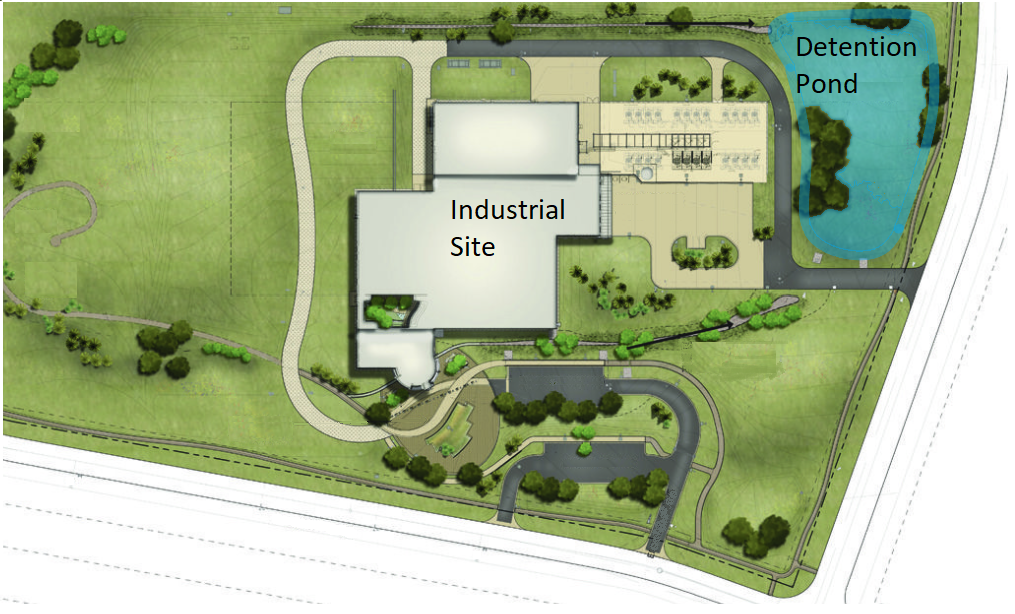
Our scenario is based on modeling a pre- and post development project on a ten-acre site in Atlanta, GA that transforms a “Meadow in good condition” to an “Industrial site”. We modeled using NOAA intensity and precipitation rainfall for the 2, 10 and 100-year return periods. Pre- and post-developed runoff hydrographs were created using both methods on the same 10-acre site. The post-developed hydrographs were routed through newly-designed detention ponds using the pre-developed peak Qs as target release rates.
To give the Rational method a fighting chance, we threw the Modified Rational method into the ring. Below are the data inputs.
Rational vs NRCS Method Data Inputs
| Scenario | Rational | Modified Rational | NRCS - Type II | |
|---|---|---|---|---|
| Area (ac) | 10.00 | 10.00 | 10.00 | |
| Pre-dev | C / CN | 0.30 | 0.30 | 71 |
| Tc (min) | 30 | 30 | 30 | |
| Post-dev | C / CN | 0.85 | 0.85 | 91 |
| Tc (min) | 12 | 12 | 12 |
Below are the resulting Pre and Post Rational method hydrographs, 100-yr. The Post Modified Rational was constructed using the peak Qs from the Pre Rational hydrograph.
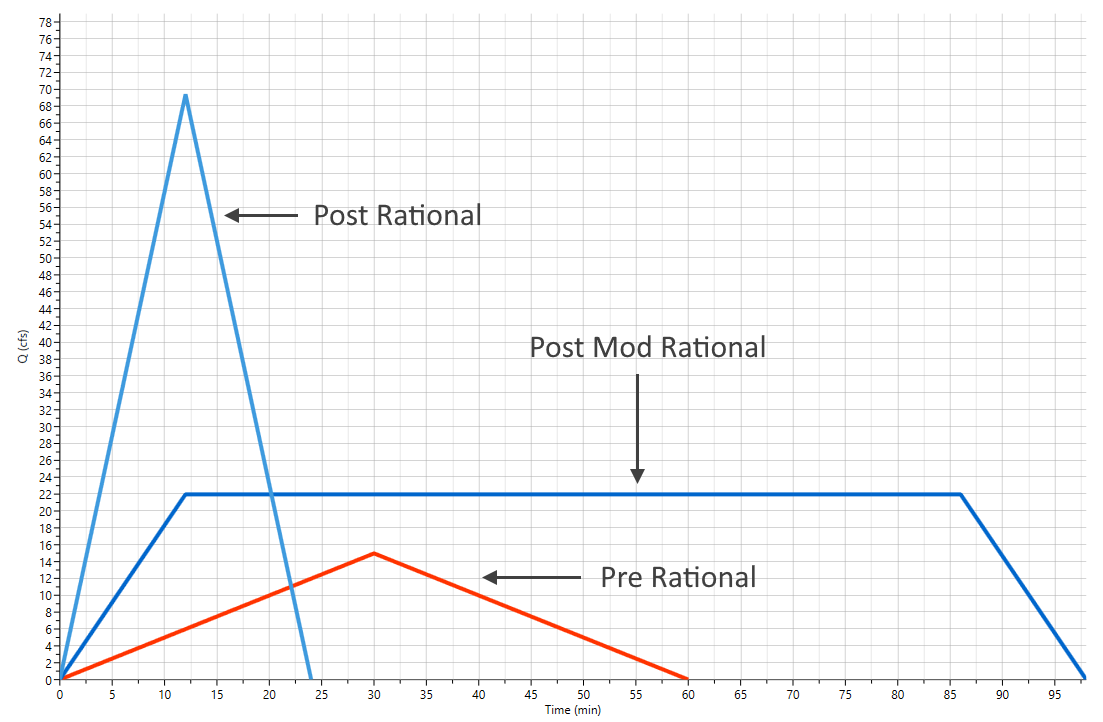
Below are the not-so-comparable 100-yr Pre and Post NRCS hydrographs.
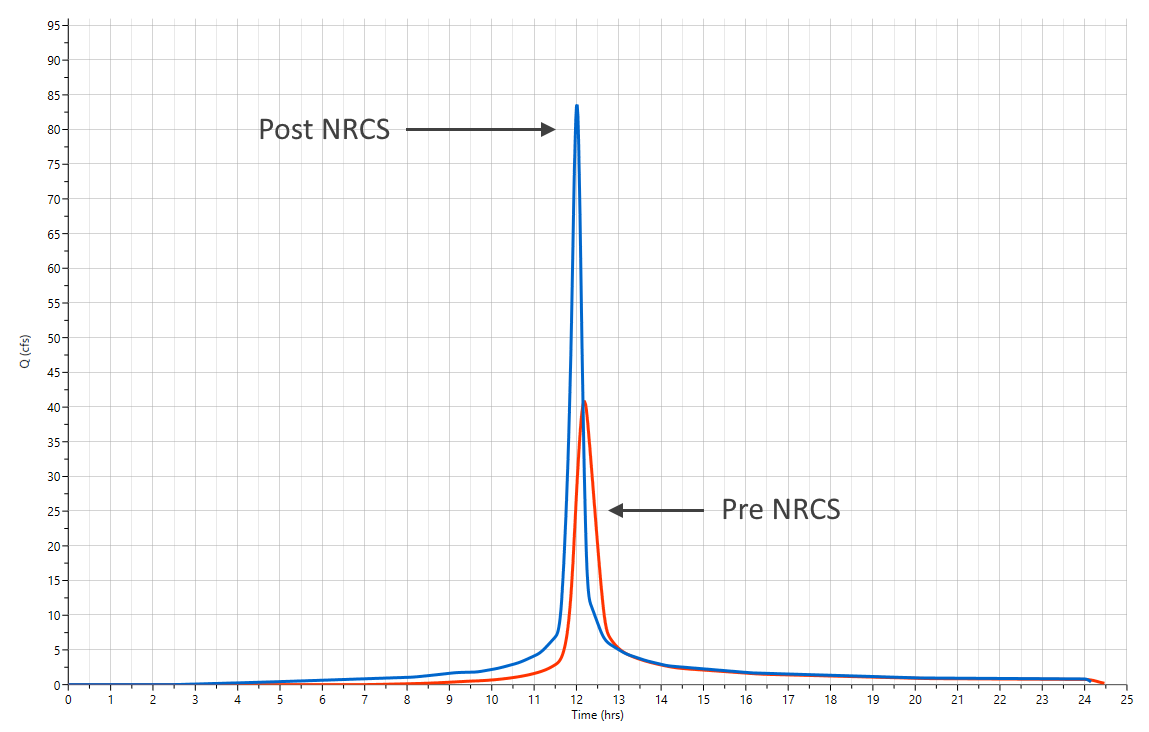
Here are the graphs presented in a numerical table.
Rational vs NRCS Method Hydrographs
| Scenario | 100-year Event | Rational | Modified Rational | NRCS - Type II |
|---|---|---|---|---|
| Pre-dev | Q peak (cfs) | 14.97 | 14.97 | 40.92 |
| T peak | 30 min | 30 min | 12.18 hrs | |
| Volume (cuft) | 26,946 | 26,946 | 163,304 | |
| Post-dev | Q peak | 69.41 | 21.97 | 83.58 |
| T peak (min) | 12 min | 12 min | 12.02 hrs | |
| Volume (cuft) | 49,978 | 113,889 | 230,508 |
Wow! The NRCS has a huge volume of over 230,000 cubic feet. Even the Modified Rational can’t come close at less than half the volume. The NRCS is going to make for a very large detention pond compared to the Rationals.
Or is it?
Lets design detention ponds for each of these scenarios and find out. We will hold as many pond design features as we can constant in order to simplify the comparison. For example, the ground rules below will make the only differences in pond sizes to be the bottom area.
Pond Design Constraints
- Ponds must be 8 feet deep.
- Final routing must provide 1 foot of freeboard.
- Ponds must be trapezoidal shape with 2:1 side slopes.
- Outlet Culvert to be 50 feet in length @ 0.50% slope.
- Must design to match pre-developed flows for the 2-, 10- and 100-year events.
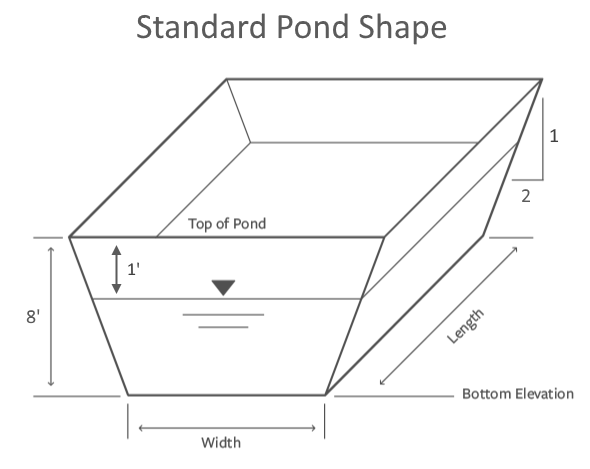
We’ll use Hydrology Studio and its three-step detention pond design procedure:
- Estimate the required pond storage by reducing post-developed flows to the pre.
- Build the storage pond to satisfy the required storage from Step 1.
- Add a multi-stage outlet structure to satisfy the three target release rates. Perform trial routings, adjusting outlet structures until the routed outflows match the pre-developed, target Qs.
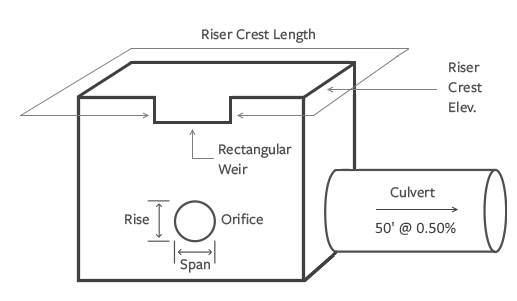
Any combination of orifices, weirs, etc. Culvert must be 50′ @ 0.50% slope.
Final Detention Pond Designs
The following designs were produced: (drum roll please…)
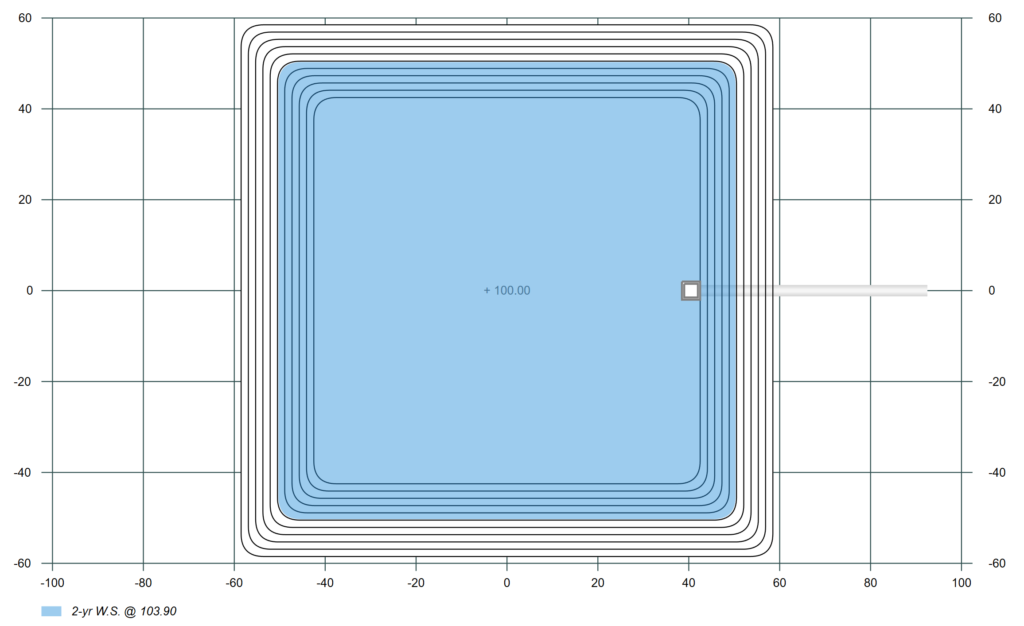
Standard Rational Method Design
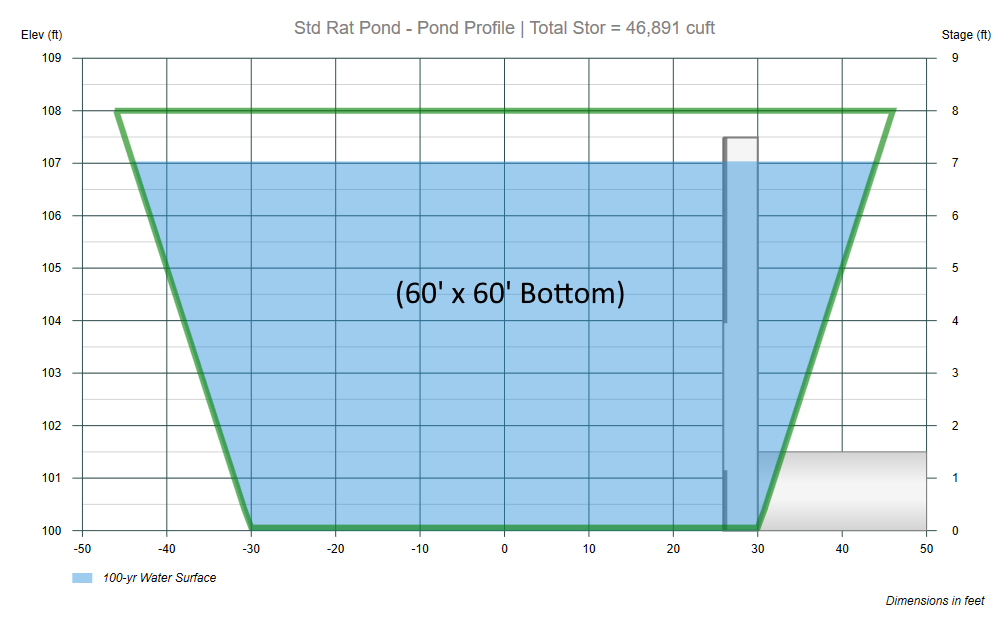
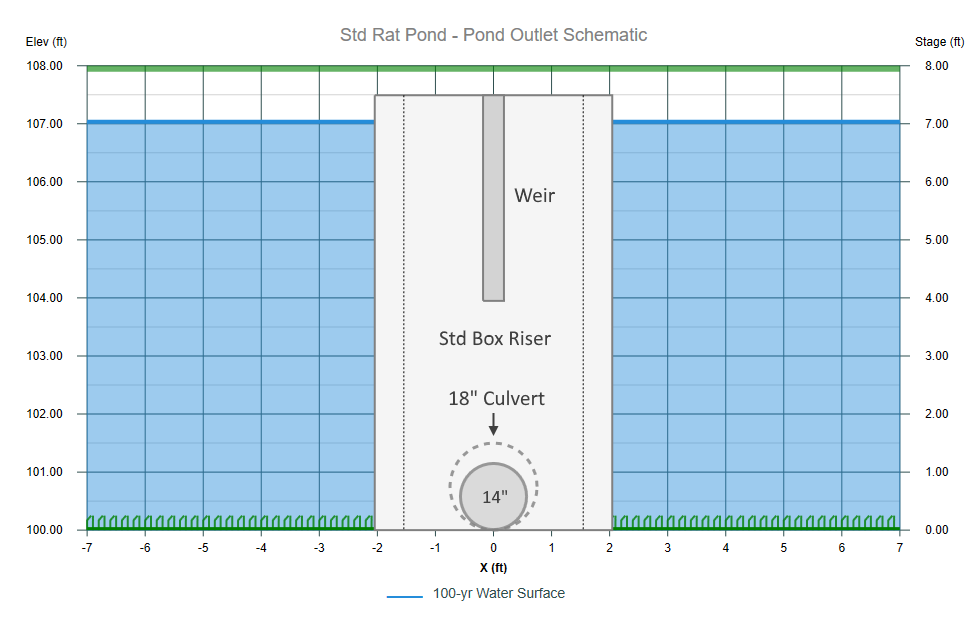

Modified Rational Method Design
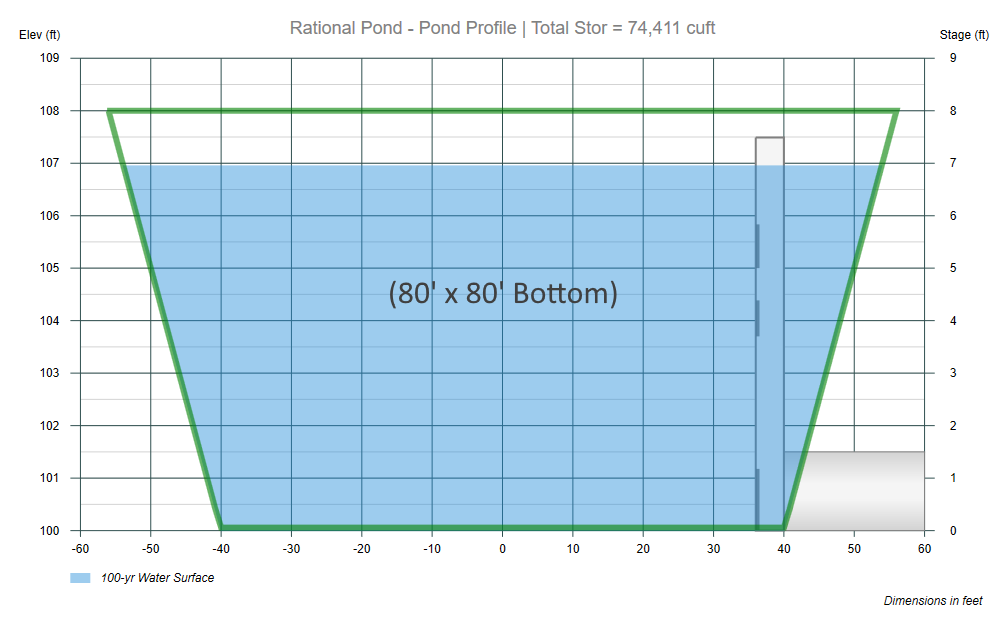
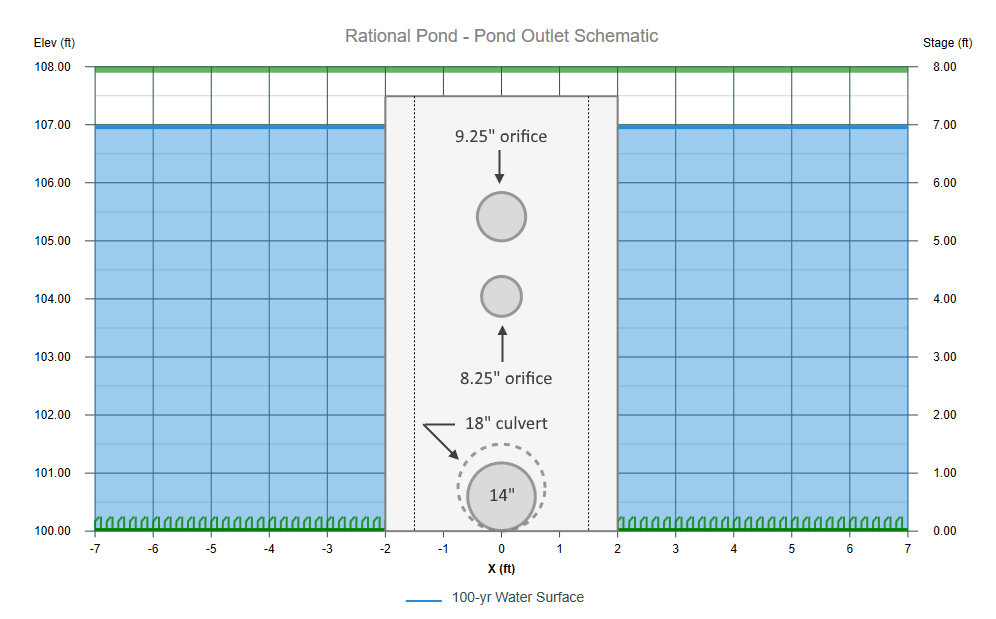
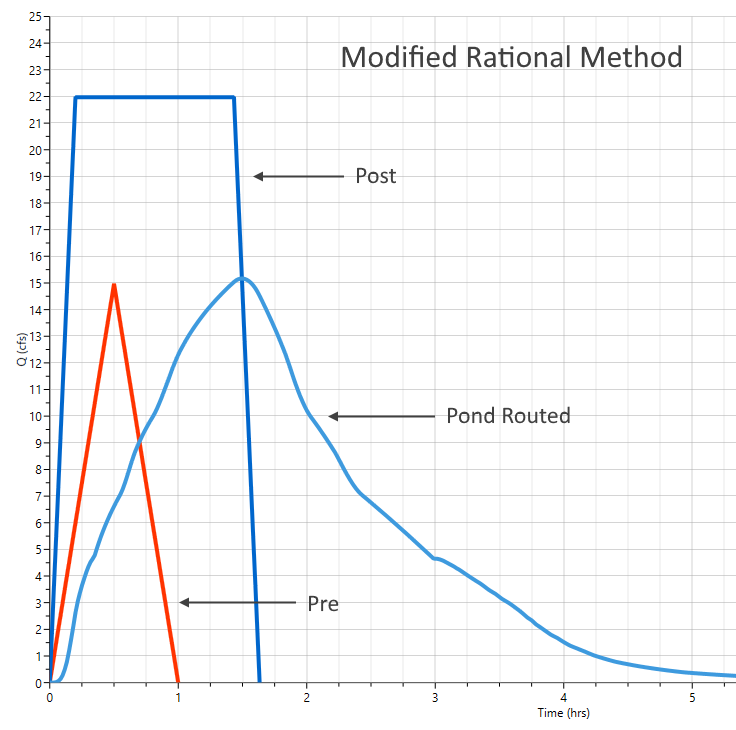
NRCS Method Design
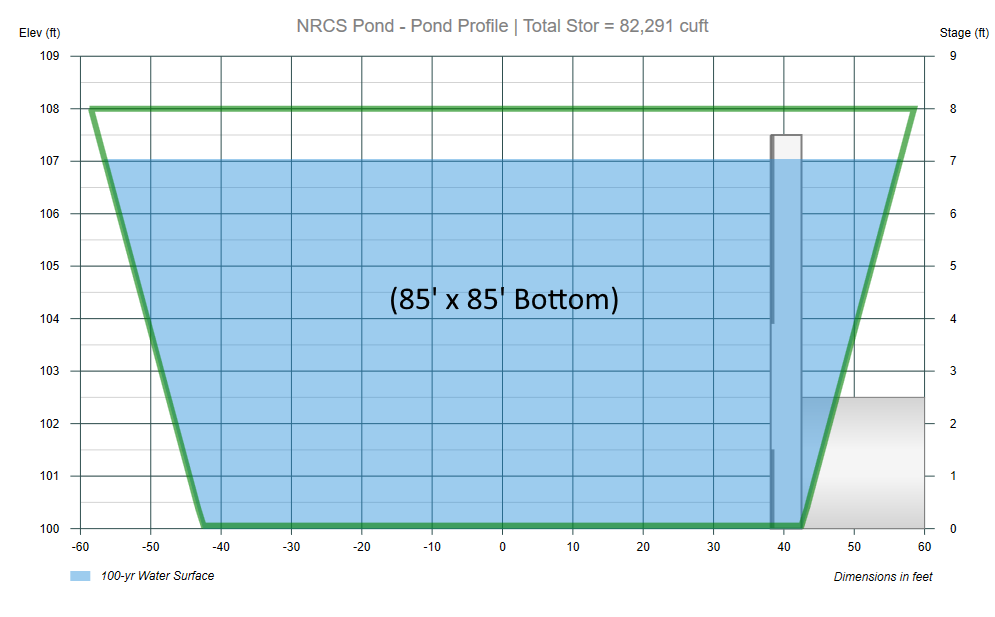
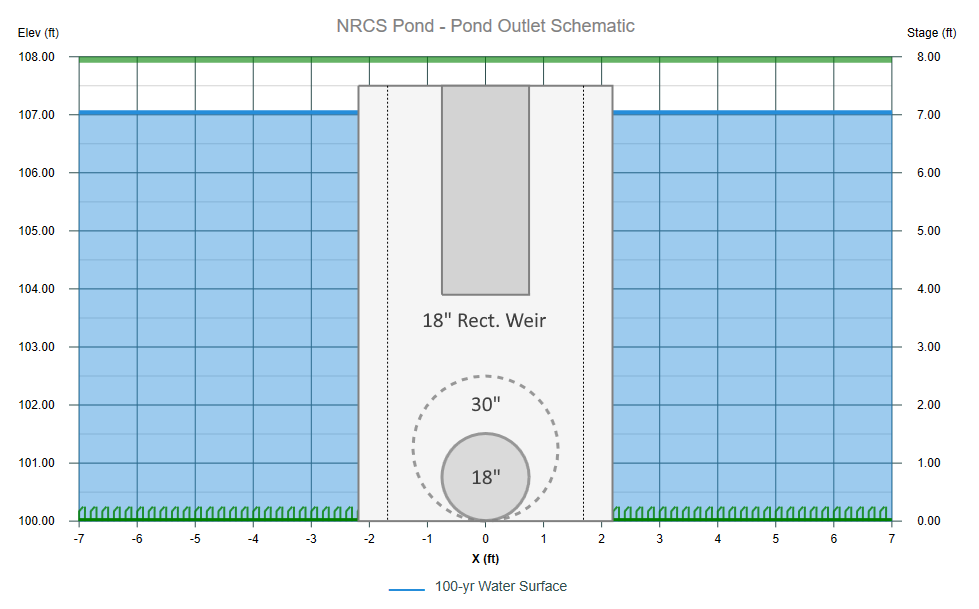
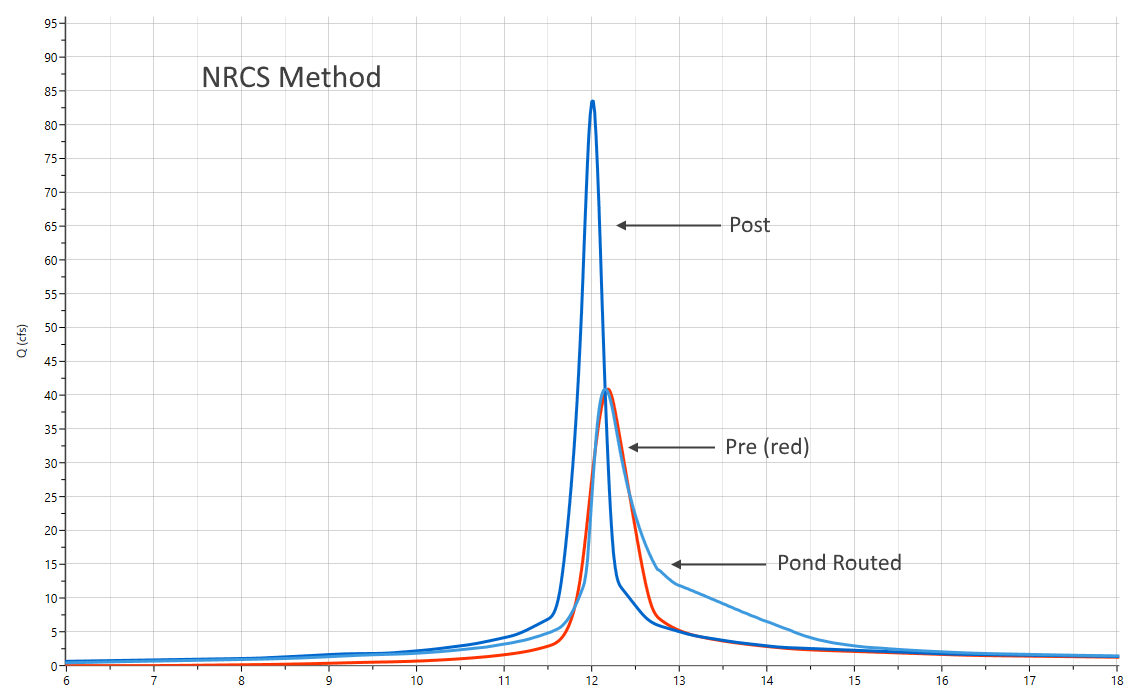
Conclusion
There you have it. Same site. Three identical pond shapes. Three different methods. Three basic outlet configurations.
The multi-stage outlets are nearly identical. Each use a standard 4′ x 4′ box riser and a couple of secondary orifices and/or weirs. The only significant difference is the SCS method needed a 30-inch culvert compared to 18’s in the Rational methods. Either way, you still have to dig a trench and lay some pipe. The cost differences are insignificant in the grand scheme.
The NRCS method produced a post-hydrograph volume of over 4.5 times that of the Rational method and more than double the Modified Rational. But the resulting differences in pond storage utilization was far less.
As shown in the table below, the NRCS method produced a post-hydrograph volume of over 4.5 times that of the Rational method and more than double the Modified Rational. But the resulting differences in pond storage utilization was far less. SCS’s pond took up only 5 additional feet in bottom length and width compared to the Modified Rational method’s footprint, requiring only 12 percent more volume.
| Method | Pond Bottom Dimensions | Inflow Hydrograph Volume | Total Storage Used | Peak Outflow |
|---|---|---|---|---|
| Rational | 60' x 60' | 49,978 cuft | 39,067 cuft | 15 cfs |
| Mod Rational | 80' x 80' | 113,889 cuft | 62,229 cuft | 15 cfs |
| NRCS | 85' x 85' | 230,508 cuft | 69,625 cuft | 41 cfs |
The Standard Rational method didn’t fare so well. Based on these results it would be a tough argument justifying using it with a conservative, SCS-type mindset. What we like about the Standard Rational is how closely the routed outflow hydrograph matches the existing, pre-developed. The Modified Rational routed outflow isn’t anywhere close to the original. NRCS gets the blue ribbon on this one as its 100-year outflow is nearly a perfect match to the original.
In Summary:
- The Standard Rational probably shouldn’t be used for detention pond designs.
- Five feet and a couple of standard sizes of culvert pipe are all that separated the Modified Rational from SCS method in this particular study.
- Thumbs-up to SCS because of how well it mimics the original pre-developed hydrograph… except for that pesky volume between 12.5 and 15 hours.
So the next time a client or colleague asks, “How will these methodology differences affect my land development project?” Your reply can be:
- Not much in the way of outlet structures but SCS commands a larger Culvert.
- SCS detention ponds will be about 75% larger than Standard Rational method ponds and about 10% larger than Modified Rational ponds.
- If your goal is to minimize costs, and your local drainage authority allows it, use the Modified Rational method.
Learn more about Hydrology Studio’s complete suite of stormwater design software.
- Hydrology Studio
- Stormwater Studio
- Culvert Studio
- Channel Studio
- Studio Express
Visit Hydrology Studio today.
